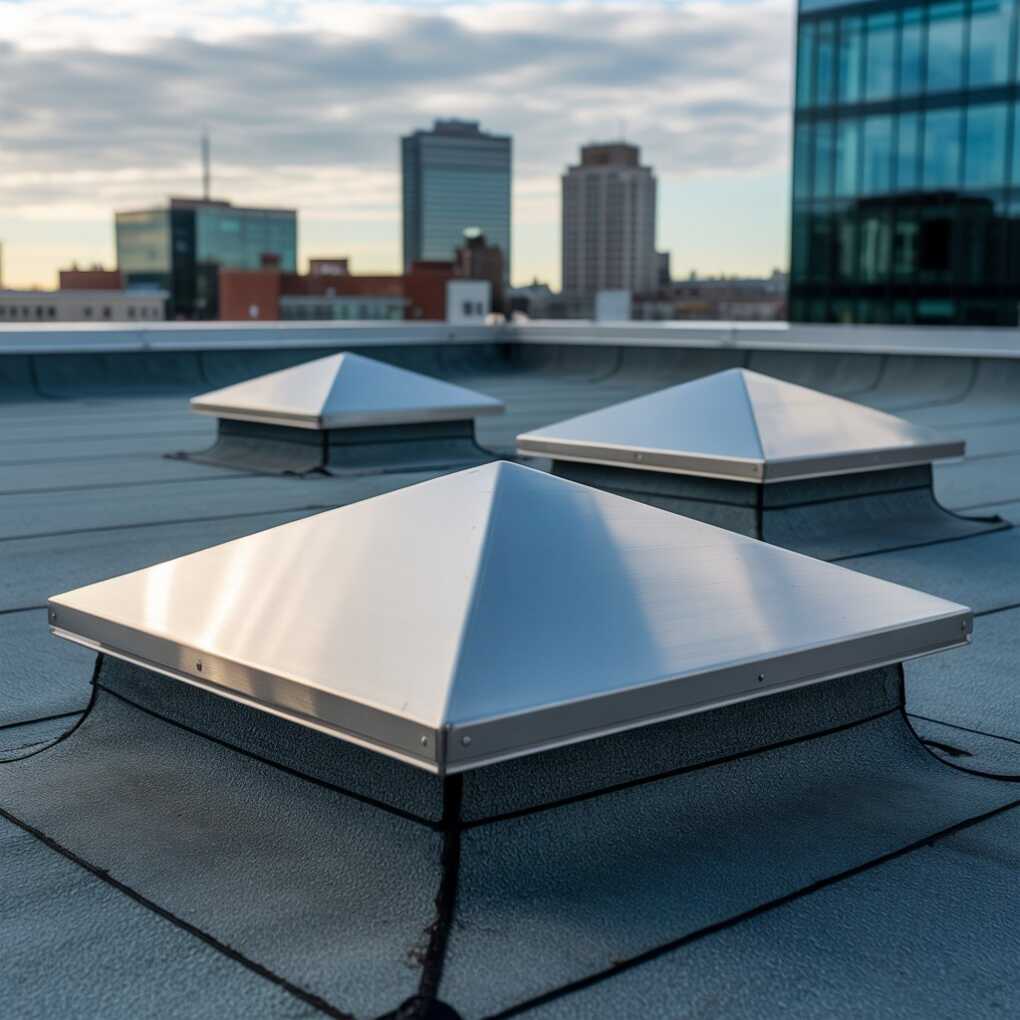When planning a building, whether a residential home or a commercial facility, access to the roof is easy to overlook. But it plays a major role in maintenance, safety, and future upgrades.

That’s why a roof access hatch is important.
This secure, weather-tight opening provides safe and easy entry to the roof, making it essential for any modern building.
This post explores roof access hatch benefits, features, installation tips, and more insights.
The Role of Roof Access Hatches
A roof access hatch is usually installed in flat or low-slope roofs and provides an opening through which maintenance workers or building occupants can pass. When well-chosen and installed properly, it offers multiple benefits beyond simple entry.
Enhanced Safety and Maintenance
As said, roof access hatches provide a controlled and secure way for personnel and homeowners to access and leave the roof.
This is essential for reducing the risk of falls and other hazards when maintenance crews try to access a roof without a dedicated opening.
Modern roofs often house various systems, such as HVAC units, solar panels, communication equipment, and more. A roof access hatch makes it simple for maintenance crews to reach these systems for routine checks, cleaning, and repairs.
These tasks become more difficult, time-consuming, and potentially dangerous without easy access. This can lead to neglected maintenance and costly issues down the line.
Equipment Access
Beyond people, a roof access hatch also allows for the safe lifting and lowering of tools, smaller equipment, and materials.
This is a big upside, especially for commercial buildings. It reduces the need for less safe methods, like hauling items over the side of a building with ladders. It streamlines work and improves efficiency on-site.
Code Compliance and Regulations
Adhering to building codes is non-negotiable. A properly installed roof access hatch helps meet local building codes. These include the International Building Code (IBC) and safety standards like OSHA’s requirements for ladderway floor openings (OSHA 1910.23).
Compliance isn’t just about avoiding expensive fines; it’s also about building safely and responsibly.
Key Features To Look for When Choosing a Roof Access Hatch
When choosing the right access doors and panels, their application, construction, and design are considerations that come to mind. For roof hatches, here are the key features to look for.
Construction Material
Most roof hatches are made from aluminum and steel for durability and sturdiness. Aluminum is lightweight and rust-resistant, offering a good balance of longevity and ease of installation.
Steel is more suited for tougher applications, especially where security is a priority. Steel hatches are robust, corrosion-resistant, and heavy-duty.
Sometimes, a project calls for something unique. This could include translucent domes to let in natural light or specialized finishes to match a building’s aesthetic. These are all available options with roof hatches.
Thermal Performance and Weatherproofing
Pay close attention to the hatch’s thermal performance to maintain the building’s energy efficiency and prevent leaks. Its insulation (R-value) should match the surrounding roof to avoid heat loss or gain and stop condensation.
High-quality gasketing and integrated flashing systems are also essential. These features ensure the hatch is completely watertight and airtight, protecting the building’s thermal performance.
Operation Mechanism and Ease of Use
The most common type is assisted gas spring hatches. They make opening and closing the hatch much easier and more controlled, preventing it from slamming shut or flying open.
Manual hatches are simpler, requiring a person to open them without help. They are typically used where access is infrequent. Electric or automatic hatches offer the ultimate convenience. They’re motorized and can be opened and closed with a remote control or integrated into a building’s smart management system. This makes them ideal for larger hatches needing frequent access or hard-to-reach locations.
Some hatches also feature a convenient one-hand operation, making them easy to open and close.
Aesthetic Integration
While functionality is key, the visual impact of a roof access hatch on a building design is just as important. This is true for residential or architecturally sensitive commercial projects.
When choosing a hatch, consider its finish, color, and profile to ensure it blends with the surrounding roof materials and the overall design.
Some manufacturers offer options for custom finishes or low-profile designs that minimize visual intrusion, helping to maintain the building’s aesthetic appeal.
Security and Access Control
A good roof access hatch should have strong locking mechanisms and be accessible from inside and outside. Options include simple padlock provisions, key locks, or even integration with the building’s security system, helping prevent unauthorized entry.
Installation Best Practices and Considerations
Proper installation ensures roof access hatches last longer and performs as intended.
Size and Configuration
The “clear opening” (the actual space you can pass through) must meet safety standards, such as OSHA’s minimums for ladder access.
Hatches can come as single-leaf (one lid) or double-leaf (two lids), depending on the required opening size. Decide between standard or custom solutions if the project has unique needs.
Location and Placement
The roof access hatch placement matters. It should be conveniently located near mechanical equipment, emergency exits, and any necessary fall protection systems.
Always consider the building’s structure to ensure the roof can safely support the hatch and the weight of people or equipment.
Load Bearing Capacity
The roof hatch must be strong enough to withstand various loads, including foot traffic, heavy snow, and equipment. Always check the manufacturer’s specifications for load ratings.
Proper Curb Construction
The hatch needs a level, structurally sound curb to mount on. This raised frame ensures proper flashing and helps divert water from the opening.
Flashing and Sealing
Integrating the hatch’s flashing into the roofing system ensures superior watertightness. Use high-quality sealants and membranes to create a continuous, impenetrable barrier against water.
Integration With Roofing System
Ensure the roof access hatch is compatible with the specific roof type, whether a low-slope roof, membrane roof, or built-up system. Proper drainage around the hatch is also essential to prevent pooling water.
Safety During Installation
Always prioritize safety. Apply fall protection measures throughout the installation to minimize fall risks. This includes using steady OSHA-compliant ladders and having guard rails around the roof hatch area.
Residential vs. Commercial Applications
While the core function remains the same, the specific needs for a roof access hatch differ between residential and commercial projects.
Residential
For homes, hatches are often smaller and simpler. The focus is usually on aesthetics, good insulation to support home comfort and ease of use for property owners.
They typically provide access to attics, HVAC units, or roof areas for maintenance.
Commercial
Commercial buildings demand more robust construction and often larger roof hatches. They also need advanced security features and the ability to handle more frequent access. Strict adherence to commercial building codes and safety regulations is also key.
Conclusion
Whether building residential or commercial complexes, planning for roof access is a smart move. A roof access hatch provides safe entry, simplifies routine tasks, and helps contractors stay code-compliant.
It also adds value for future property owners, tenants, or maintenance teams, reducing the need for unsafe external access solutions.
Factoring in a roof hatch during the early design stages saves time, reduces costs, and creates a more functional building
